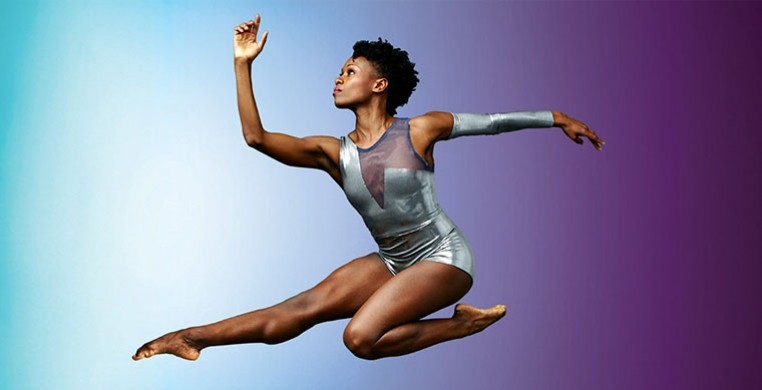As a college dance major, I vividly remember walking up to the ticket window at the Auditorium Theatre and snatching $10 last call tickets for Alvin Ailey American Dance Theater. That $10 somehow got me into a box seat; viewing Revelations live for the first time is a memorable, if not spiritual experience for any young dancer. It is the perfect bite, the tastiest of dance desserts, flawless in every way.
What is rather remarkable about watching the Ailey company, who have made a tour stop at the Auditorium for 46 of the company’s 58 seasons, is that the classic Ailey works, danced by some of highest caliber dancers in the country, still give me that same feeling. Every time. Do the dancers tire of performing Revelations over and over and over? Probably, but we, their audience, never get tired of watching it.
Fortunately, if the day ever arrives that audiences simply aren’t in the mood for Revelations any more, Artistic Director Robert Battle refuses to let Ailey be a one-trick pony. Battle is only the third Artistic Director in the company’s history, hand picked by Alvin Ailey’s successor Judith Jamison. Battle has, thus far, risen to the challenge, breathing life and currency into the company by commissioning new works and acquisitions from some of the world’s best choreographers. Last week's engagement in Chicago was a blend of old and new, with program A boasting a revival of Ailey’s classic solo Love Songs after more than a decade on the shelf, and Chicago premieres of this season’s fresh repertoire.
Ronald K. Brown’s Open Door fits seamlessly into Ailey’s older rep with timeless sensibilities and a hint of antiquity. If it wasn’t printed in the program, I wouldn’t have known the piece was made just last year. Open Door is easy on the eyes, technical and fun. There’s not much need to overanalyze the piece, though its title and grab bag of musical styles allude to cultural connections between African and Latin rhythms, and American Jazz, echoed by Keiko Voltaire's mix of styles in the costumes.
Artistic Director Robert Battle took a different approach in his Awakening, also created for the 2015-16 season. Battle’s movement is abstract, with a dozen dancers running and prancing in hunched over postures. It’s a piece that requires all the concentration and technique of any Ailey piece, but doesn’t immediately read that way. Awakening is a conceptual piece, it shies away from exhibition in the dance, making up for it in production elements. This is a piece that almost literally shouts at its viewers like an action flick. John Mackey’s bassy, uncomfortably loud soundtrack and Jon Taylor’s all-white separates complement Battle’s ritualistic movement, alluding to a sort of futuristic rite.
The differences in choreographic approach are heightened by two strikingly different lighting designs by Al Crawford. While Open Door uses warm colors and soft swipes across the backdrop, Awakening employs a massive grid backlit by aggressive white light, forming dots all of the landscape. Is it an attempt to mask Battle’s choreography, demonstrate antiquity in Ailey’s classic works, or to keep a conventional audience interested with what could be considered a weird piece? One can speculate the motivation behind such a heavy-handed design, but one thing is for sure: a light show spectacle behind fantastic dancers is almost always a formula for rousing applause, and Awakening is no exception.
Looking around at the packed Auditorium Theatre on a Tuesday night, it occurred to me how important the Ailey company is for dance. Ailey’s works are some of the most loved and recognized dances we have; this is truly an American dance company. While many audience members might be happy to sit back and watch Cry, Blues Suite, Pas de Duke and Revelations over and over and over, Robert Battle appears to be interested in having his company participate in the present, as well as the past. No company’s future is guaranteed; no company is “too big to fail,” so to speak. By bringing new works to Ailey's massive and loyal following – some of which fit quietly into the Ailey lexicon and a few others that will challenge its audiences – Robert Battle is building the case for Alvin Ailey American Dance Theater as a current and relevant member of the dance community for many more decades.

